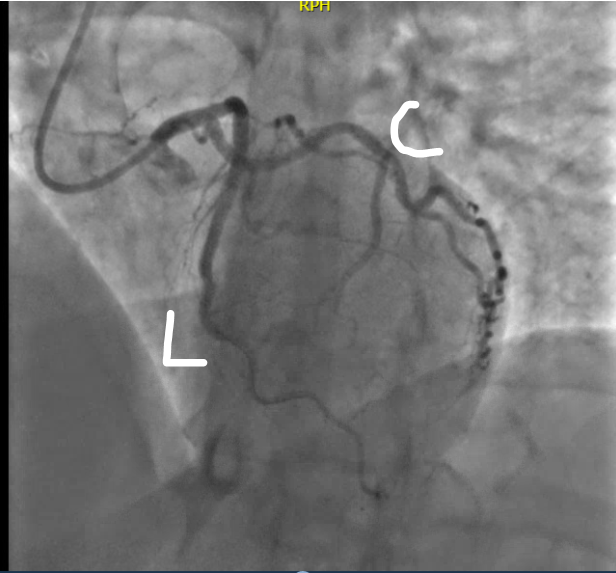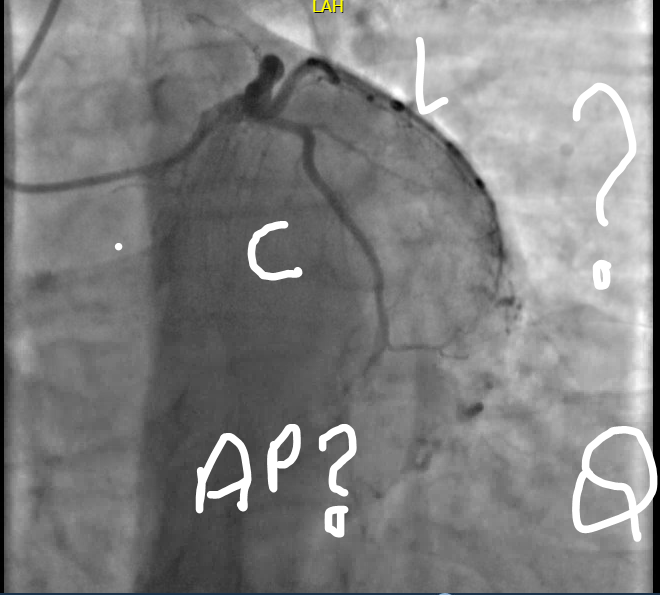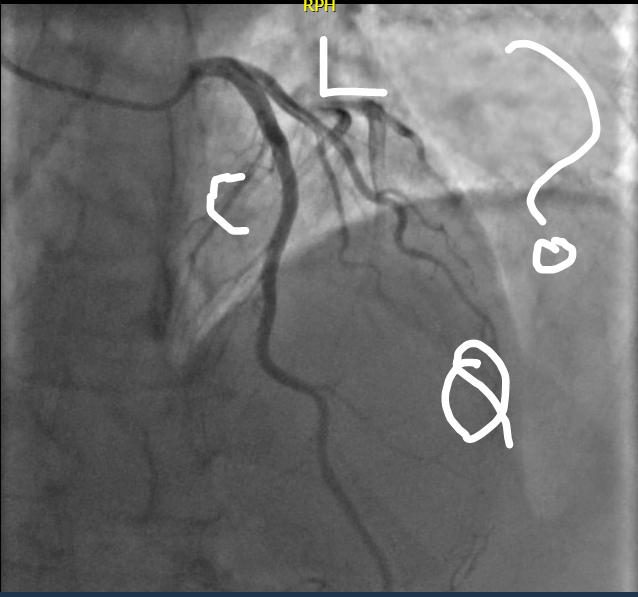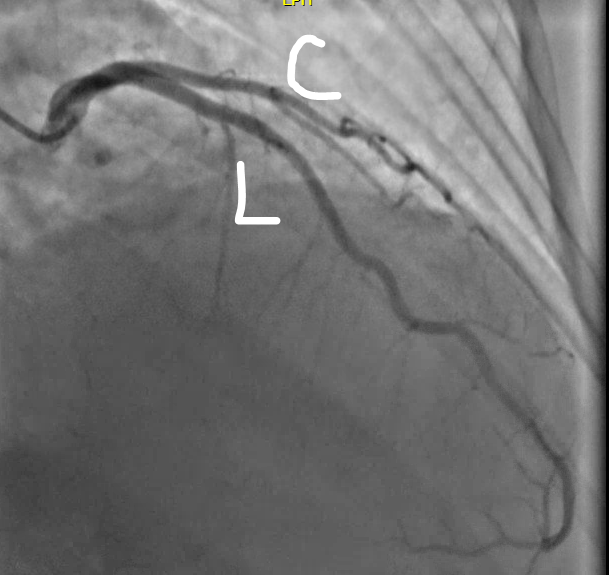Cardsfellow1234
New Member
- Joined
- Aug 9, 2021
- Messages
- 9
- Reaction score
- 1
Hello all,
I am a second year Cards fellow and in certain views I have realized I have a hard time telling LAD from Cx. I am sorry if this seems too intuitive to some, would love some validation/cross checking to make sure I am interpreting this correctly. I also hear Angiogerams are tested on the boards, but more so for my own practice I want to make sure I have these down straight, I hope this discussion also helps anyone else out there like me who struggles with 3 D spatial thinking
Would appreciate any input !!!!
Example 1. Below I think is an AP view - L = LAD, C =LCx. IS this labelled correct?

Example 2: Below I think is a weird RAO Caudal View

Example 3 Below is an AP View but I am really not sure if I have labelled the LAD and Cx correct here, hence the question marks...lol

Example 4: Think below is again an RAO caudal view

Example 5: I think below is an RAO Cranial View - really not sure if this is labelled correctly

Example 6: Really not sure if below is an RAO cranial or RAO caudal view - I dont see a diaphragmatic shadow clearly which would suggest a cranial angulation

I am a second year Cards fellow and in certain views I have realized I have a hard time telling LAD from Cx. I am sorry if this seems too intuitive to some, would love some validation/cross checking to make sure I am interpreting this correctly. I also hear Angiogerams are tested on the boards, but more so for my own practice I want to make sure I have these down straight, I hope this discussion also helps anyone else out there like me who struggles with 3 D spatial thinking
Would appreciate any input !!!!
Example 1. Below I think is an AP view - L = LAD, C =LCx. IS this labelled correct?
Example 2: Below I think is a weird RAO Caudal View
Example 3 Below is an AP View but I am really not sure if I have labelled the LAD and Cx correct here, hence the question marks...lol
Example 4: Think below is again an RAO caudal view
Example 5: I think below is an RAO Cranial View - really not sure if this is labelled correctly
Example 6: Really not sure if below is an RAO cranial or RAO caudal view - I dont see a diaphragmatic shadow clearly which would suggest a cranial angulation
